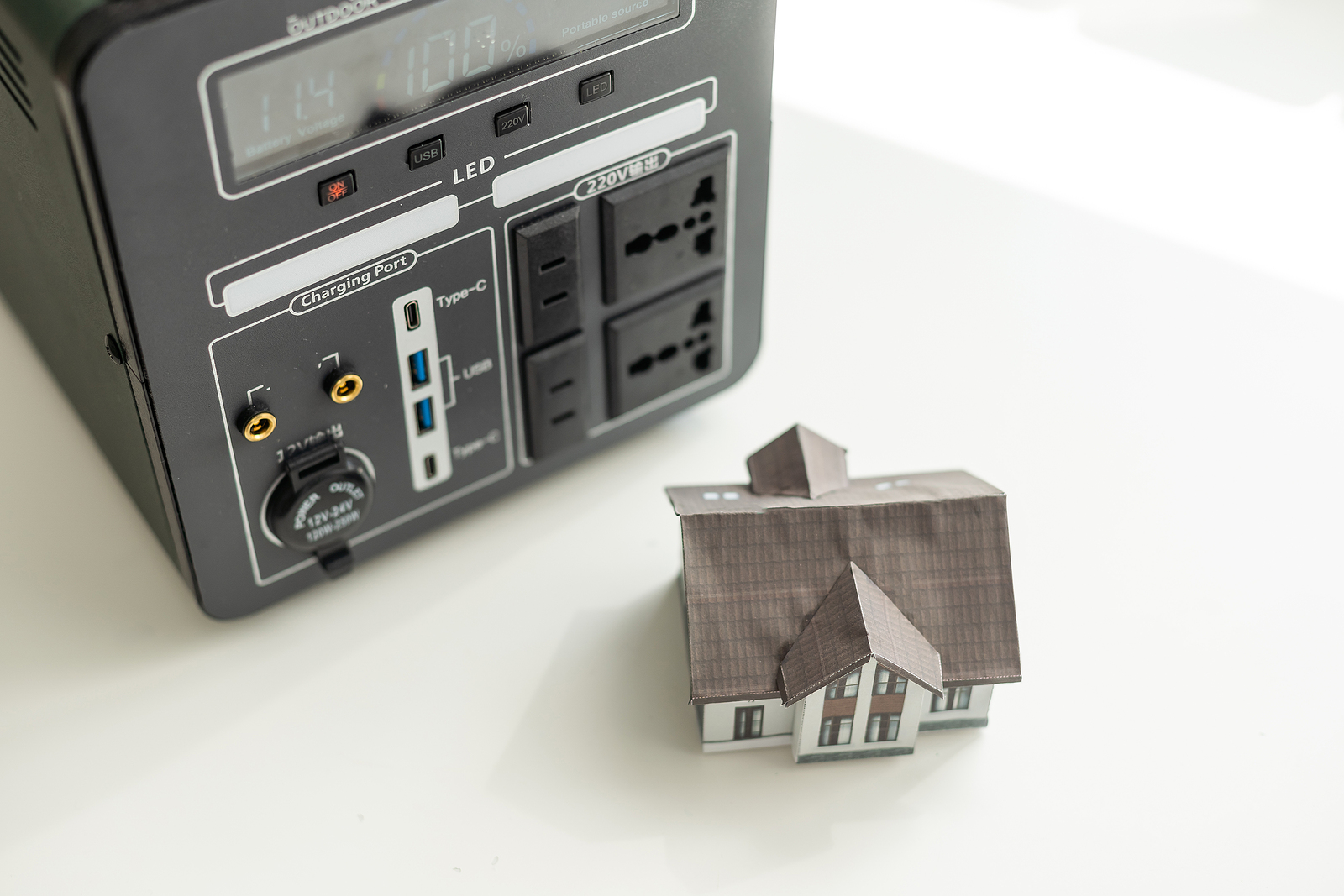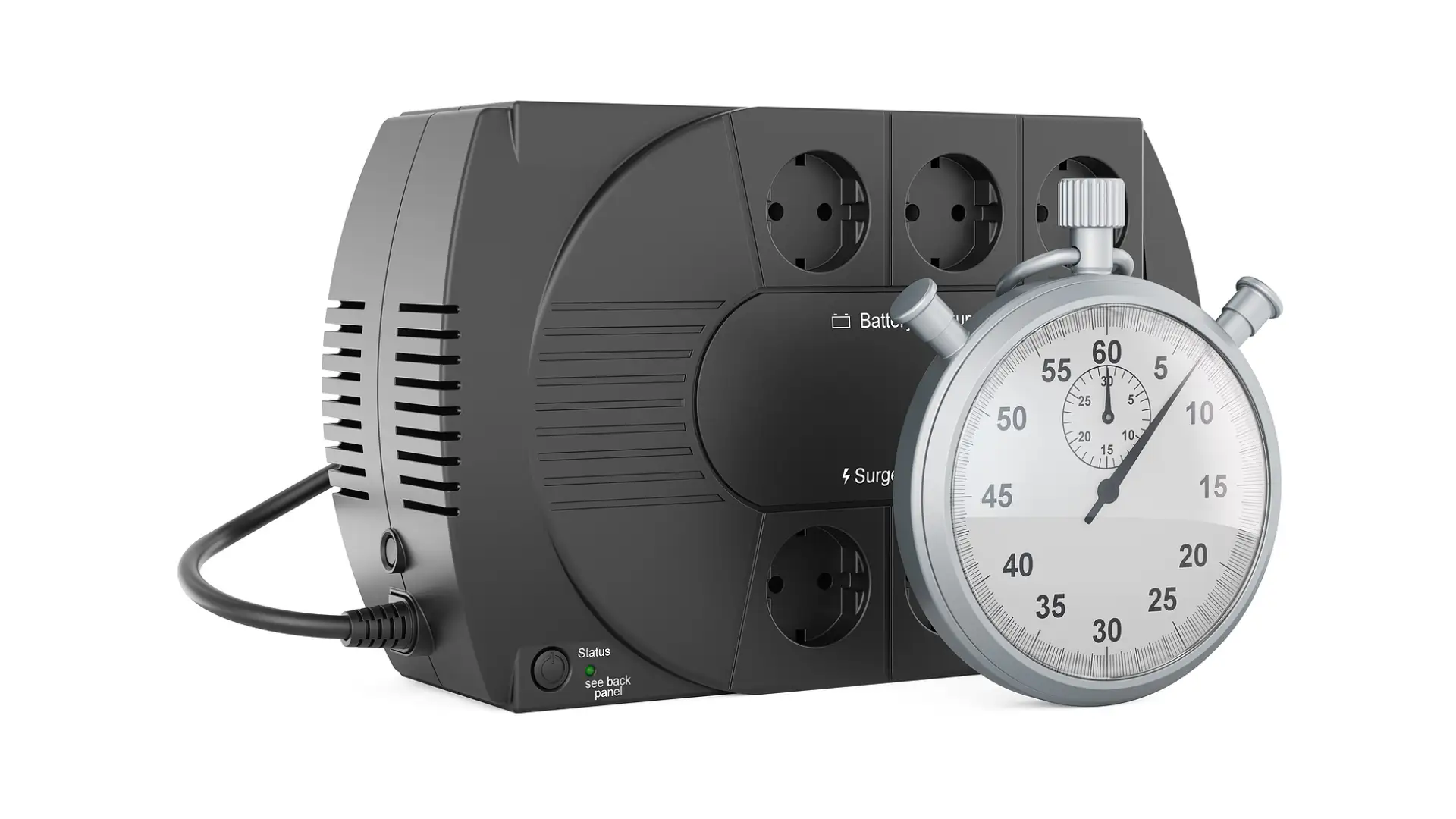
Difference Between UPS and Power Supply
In today's digitally-driven world, uninterrupted power supply is crucial to maintaining the smooth operation of electronic devices. When considering backup power solutions, two terms often come up: Uninterruptible Power Supply (UPS) and Power Supply. While they might sound similar, they serve distinct purposes and have different functionalities. In this comprehensive guide, we will delve into the key differences between UPS and Power Supply, helping you make informed decisions about which solution suits your needs best.
What is a Power Supply?
A power supply is a crucial electronic device tasked with the vital function of transforming incoming electrical power, usually sourced from the grid or another power source, into a meticulously tailored and appropriate format required by various electronic devices.
Its principal objective is to guarantee that these connected devices receive an unfluctuating, regulated, and finely tuned supply of voltage, current, and frequency, thereby enabling them to operate at their peak efficiency and effectiveness. The overarching significance of power supplies spans across a diverse spectrum of technology, encompassing computers, servers, routers, and an expansive array of electronic apparatus.
What is an Uninterruptible Power Supply (UPS)?
An uninterruptible power supply, known as a UPS, functions as a backup electrical reservoir. It's a device that supplies power to a load during a power outage.
Differing from an emergency generator that employs fuel to create electricity, a UPS already holds the necessary energy in reserve. It promptly delivers power by utilizing batteries, supercapacitors, or flywheels.
While UPSs typically offer brief periods of on-battery operation, it proves sufficient for initiating a backup power source or executing a proper shutdown. This capability is generally reserved for emergencies, preventing a complete loss of electricity, even if only for a limited duration.
The specific energy capacity of a UPS varies. A single computer demands less energy compared to an entire data center or building. As the electricity requirement increases, so does the UPS size.
Differences Between UPS and Power Supply
Purpose and Use Cases
Power supplies play a pivotal role in the conversion and delivery of power to electronic devices, ensuring their continuous operation under regular circumstances. In contrast, Uninterruptible Power Supply (UPS) systems are meticulously engineered to serve as a vital lifeline, providing an interim power source precisely when conventional power access falters unexpectedly. While power supplies are instrumental in the routine functioning of devices, UPS systems step in during unforeseen power disruptions, safeguarding against data loss and operational discontinuity.
Backup Duration
Power supplies offer power solely within the immediate span of the power interruption, lacking any sustained backup capability. On the contrary, UPS systems shine by furnishing a finite yet strategic backup period, spanning from a matter of minutes to potentially extended hours. This temporal window, contingent upon the type and capacity of the UPS, empowers users to meticulously preserve crucial data and execute systematic shutdown procedures, especially during protracted instances of power outages.
Circuitry and Components
The inherent design of power supplies revolves around the meticulous regulation and conditioning of incoming power, a crucial aspect to ensure compatibility with the energy demands of connected devices. In contrast, UPS systems transcend this basic functionality through the integration of advanced circuitry. This additional complexity encompasses intricate battery charging mechanisms, seamless switchover between power sources (from mainline power to battery), and the maintenance of a steady and unwavering power output. This multifaceted circuitry ensures a seamless transition from one power source to another without disrupting the operation of connected equipment.
Cost Considerations
When considering cost factors, power supplies emerge as the more economical choice. Their affordability is rooted in the absence of battery backup technology. In sharp contrast, UPS systems, owing to their incorporation of sophisticated battery systems, bear a higher price tag. The decision-making process between the two hinges on a nuanced evaluation of factors such as the critical nature of the devices reliant on them, along with the permissible duration of operational downtime.
Advantages of Power Supplies
Power supplies play a pivotal role in providing straightforward and efficient power delivery for a variety of devices. The benefits they offer are multifaceted and include:
- Cost-Effectiveness: Power supplies hold a distinct advantage in terms of cost-effectiveness. Compared to more complex Uninterruptible Power Supply (UPS) systems, power supplies are generally more affordable. This affordability makes them an economical choice, especially for devices that are not of critical importance.
- Ease of Use and Integration: One of the prominent advantages of power supplies is their seamless integration into devices. During the manufacturing process, power supplies can be easily incorporated into the design of electronic equipment. This integration eliminates the need for additional setup steps, saving time and effort.
- Energy Efficiency: Power supplies are engineered with a focus on delivering power while minimizing energy loss. This dedication to energy efficiency translates to devices running with optimal power consumption. By converting and regulating power efficiently, power supplies contribute to reducing energy waste, which is not only environmentally responsible but also helps lower operating costs over time.
- Reliability: Power supplies, due to their fundamental design, offer a reliable power source for devices. Their purpose is to ensure consistent and stable power flow, which is essential for the proper functioning of electronic equipment. This reliability enhances the overall performance and lifespan of devices.
- Compact Design: Power supplies are designed to be compact and space-efficient. This compactness aids in their integration into various devices, allowing for sleek and streamlined product designs.
Advantages of UPS Systems
Uninterruptible Power Supply (UPS) systems provide a range of distinctive advantages that are crucial for maintaining the stability and integrity of critical systems. These benefits encompass:
- Downtime Prevention: UPS systems are designed to counteract the disruptive impact of power outages. By swiftly and seamlessly transitioning to battery power in the event of a power interruption, UPS systems ensure that critical systems remain operational without interruption. This capability is particularly vital for sectors such as data centers, healthcare facilities, and financial institutions, where even momentary downtime can result in substantial financial losses and compromised services.
- Data Loss Mitigation: The continuity offered by UPS systems plays a pivotal role in data protection. By averting sudden power failures, UPS systems prevent data loss that can occur during unexpected shutdowns. This feature is especially significant for servers, storage systems, and networking equipment that house sensitive and irreplaceable information.
- Voltage Fluctuation Protection: UPS systems act as a barrier against the detrimental effects of voltage fluctuations. Voltage sags, surges, and spikes pose a significant risk to the longevity of electronic devices. UPS units regulate the incoming power, providing a stable and consistent voltage output to connected devices, thus extending their lifespan and ensuring optimal performance.
- Equipment Safeguarding: The voltage regulation and isolation provided by UPS systems extend beyond preventing downtime. They also act as a safeguard for connected electronics, shielding them from potential damage caused by abrupt power fluctuations. This protection is particularly vital for expensive and mission-critical equipment.
- Graceful Shutdown: In situations where power outages persist for an extended period, UPS systems offer a critical window of opportunity. This window allows users to execute a controlled and orderly shutdown of systems. This “graceful shutdown” process safeguards against data corruption and system instability that can result from abrupt power loss.
- Battery Health Monitoring: Many modern UPS systems are equipped with advanced battery monitoring and management features. These functionalities ensure that the UPS's internal battery remains in optimal condition, providing reliable backup power when needed.
Choosing Between UPS and Power Supply

Factors to Consider
When faced with the choice between utilizing a power supply or investing in an Uninterruptible Power Supply (UPS), a comprehensive evaluation of several key factors is essential. Among these considerations are the specific nature of the devices being powered, the potential ramifications of power interruptions, and the financial constraints governing the decision-making process. It is within this context that the decision should be made to ensure optimal performance and protection.
Scenarios Demanding UPS
Certain scenarios arise where the deployment of a UPS system is not just advisable but paramount to ensure uninterrupted operations and data integrity.
- Server Rooms: The importance of servers in today's digital landscape cannot be overstated. They house and manage crucial data while running applications that facilitate core business functions. Even the briefest power interruption can lead to data corruption or loss. UPS systems prove to be the backbone of defense, providing an immediate and seamless transition to backup power, thereby eliminating the risk of operational disruptions and potential financial losses.
- Medical Facilities: Within medical facilities, where patient well-being hinges on precise medical equipment functioning reliably, UPS systems play a critical role. Life-saving equipment demands unwavering power stability to maintain accurate diagnoses and execute necessary medical procedures without interruption. UPS systems are indispensable in ensuring the continuous operation of these vital tools, irrespective of power fluctuations.
- Data Centers: Data centers house vast volumes of sensitive information, often serving as the backbone of an organization's digital infrastructure. Data unavailability due to power interruptions can result in substantial financial losses, erode customer trust, and damage an organization's reputation. UPS systems stand as the last line of defense, guaranteeing data center continuity and safeguarding against any downtime-related adversity.
Scenarios Suited for Power Supplies
While UPS systems excel in safeguarding critical operations, there are scenarios where power supplies provide a cost-effective and suitable alternative:
- Home Electronics: Power supplies suffice for powering home-based electronics such as personal computers, entertainment systems, and other non-critical devices. These devices generally tolerate temporary power interruptions without dire consequences, making the added expense of UPS batteries unnecessary.
- Office Equipment: Within office environments, certain devices like printers, scanners, and other non-essential equipment might experience short periods of inactivity during power outages. While this downtime might inconvenience workflows, it might not significantly impact operations. For these instances, power supplies prove sufficient without the need for the robust backup capabilities offered by UPS systems.
Installation and Maintenance:
Installation of Power Supplies
The installation of power supplies is an integral part of the manufacturing process for devices. In cases where standalone power supplies are used, the installation process entails connecting the power supply unit to both the electronic equipment it will power and the main power source. This connection ensures the seamless flow of regulated power from the supply to the device, enabling its regular operation.
Setting Up UPS Systems
Setting up Uninterruptible Power Supply (UPS) systems is a more comprehensive endeavor due to their intricate nature. This process involves multiple steps to ensure optimal performance during power interruptions. Initially, the UPS needs to be linked to the electronic devices it will safeguard.
Subsequently, it must be connected to a primary power source to facilitate the continuous charging of its internal batteries. This charging process is crucial, as it determines the duration for which the UPS can provide backup power.
In scenarios where extended power outages are anticipated, the capacity of the UPS batteries becomes vital. Additionally, certain UPS models offer software solutions that enable remote monitoring and management, enhancing the ability to respond to various power-related events effectively.
Maintenance Requirements
Power supplies embedded within devices generally necessitate minimal maintenance, as they are designed to function seamlessly over extended periods without intervention. However, UPS systems demand more attention to ensure their reliability when needed most. Regular maintenance is vital to monitor and sustain the health of the UPS batteries. Periodic battery inspections, testing, and replacements are essential to preserve the UPS's ability to deliver extended backup power.
Generally, battery replacements are recommended every few years, as the capacity of rechargeable batteries can degrade over time. These maintenance efforts collectively contribute to the longevity and effectiveness of UPS systems, reinforcing their role as a dependable power backup solution.
FAQs: Uninterruptible Power Supply (UPS) and Power Supply Differences
What is the primary function of a power supply?
A power supply transforms incoming electrical power into a suitable format for electronic devices, ensuring a consistent supply of voltage, current, and frequency for optimal device performance.
How does an Uninterruptible Power Supply (UPS) differ from a power supply?
A UPS is a backup power solution that provides temporary power during outages, using batteries, supercapacitors, or flywheels. A power supply focuses on delivering regulated power during normal operations.
What is the purpose of a UPS during power outages?
A UPS acts as an interim power source to prevent downtime and data loss during unexpected power disruptions, allowing for a controlled shutdown or seamless transition to a backup power source.
Can power supplies offer backup power during outages?
No, power supplies don't offer backup power. They regulate power for devices but lack the capacity to provide sustained power during interruptions.
How long does a UPS provide backup power?
The backup duration of a UPS varies based on its type and capacity. It can range from minutes to several hours, depending on the power requirements and battery capacity.
What components distinguish UPS systems from power supplies?
UPS systems have advanced circuitry for seamless switchover between power sources, battery charging mechanisms, and steady power output maintenance. Power supplies focus on power regulation.
Are power supplies more affordable than UPS systems?
Yes, power supplies are generally more cost-effective as they lack battery backup technology. UPS systems are more expensive due to their integrated battery systems.
Final Thoughts
In the world of power solutions, understanding the difference between Uninterruptible Power Supplies (UPS) and power supplies is paramount. Power supplies provide consistent power regulation, while UPS systems offer critical backup power during outages. Choosing between the two depends on the specific needs of your devices, the potential impact of power interruptions, and your budget. For mission-critical systems, investing in a UPS system is a wise decision to ensure uninterrupted operations and data integrity.
Sources
continue reading
Related Posts
Uninterruptable Power Supplies In today's world, where technology keeps us […]
Uninterruptible Power Supply For Laptop In today's fast-paced digital world, […]
Small Uninterruptible Power Supply In today's digital age, where connectivity […]




